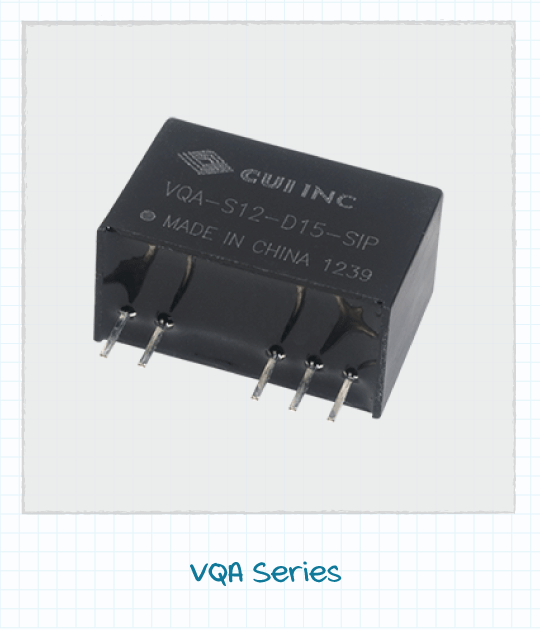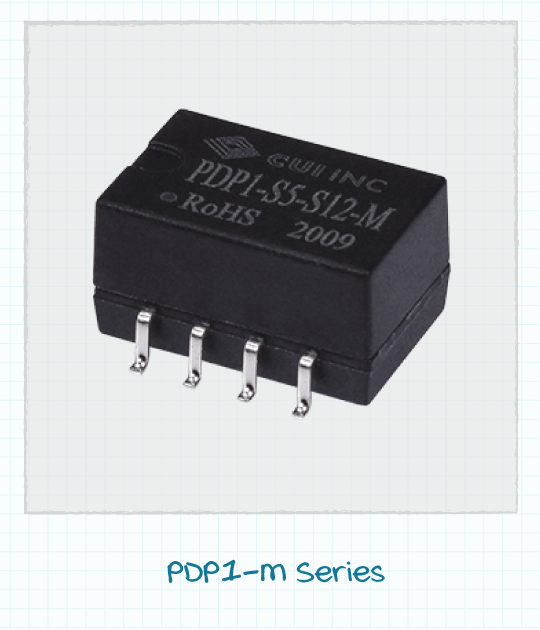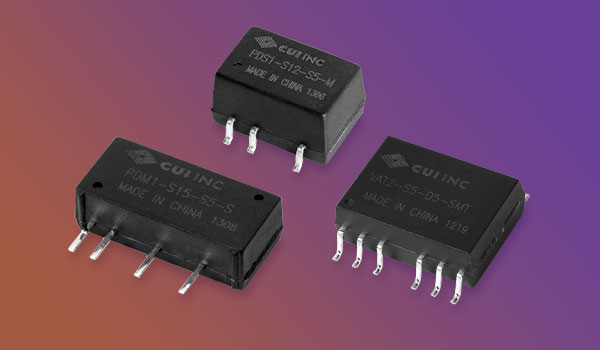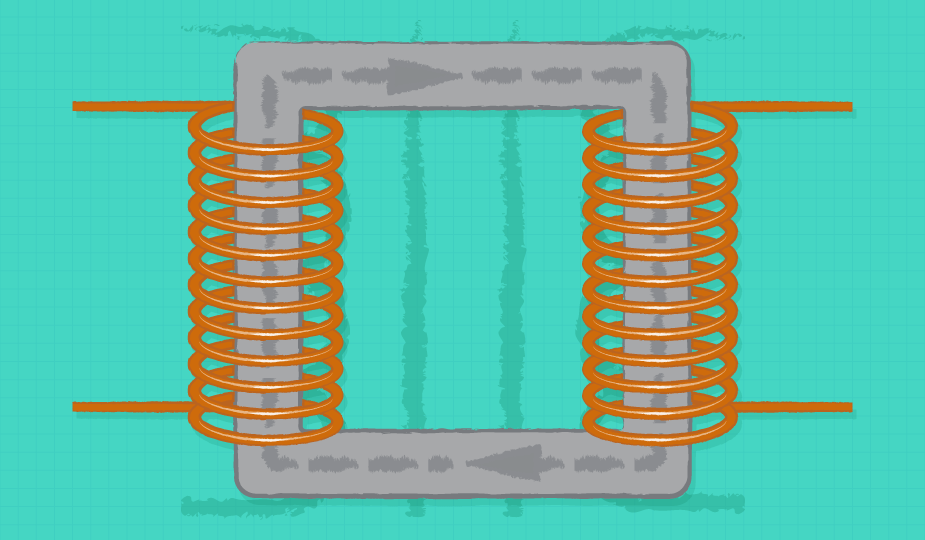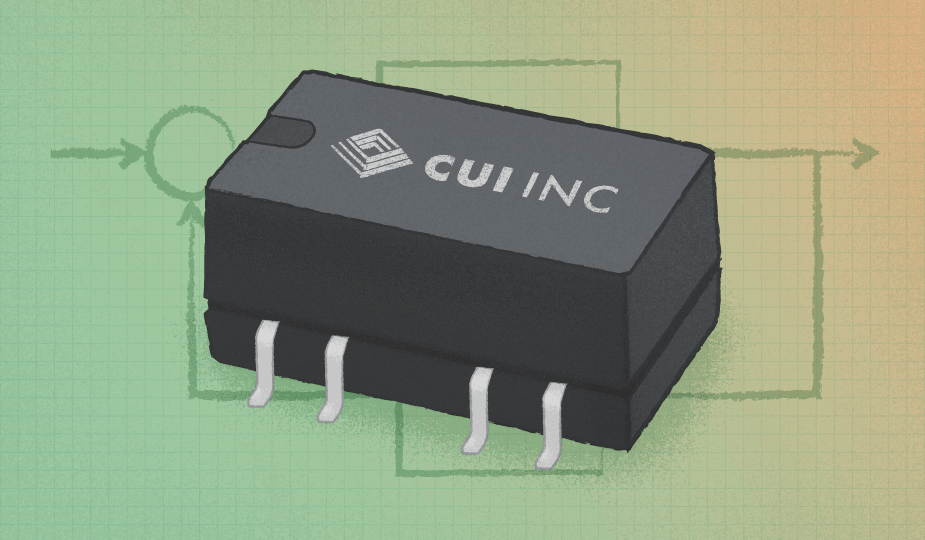Reducing Supply Rail Common Mode Noise in Audio Applications
November 24, 2020 by Ron Stull - 6 Minute Read
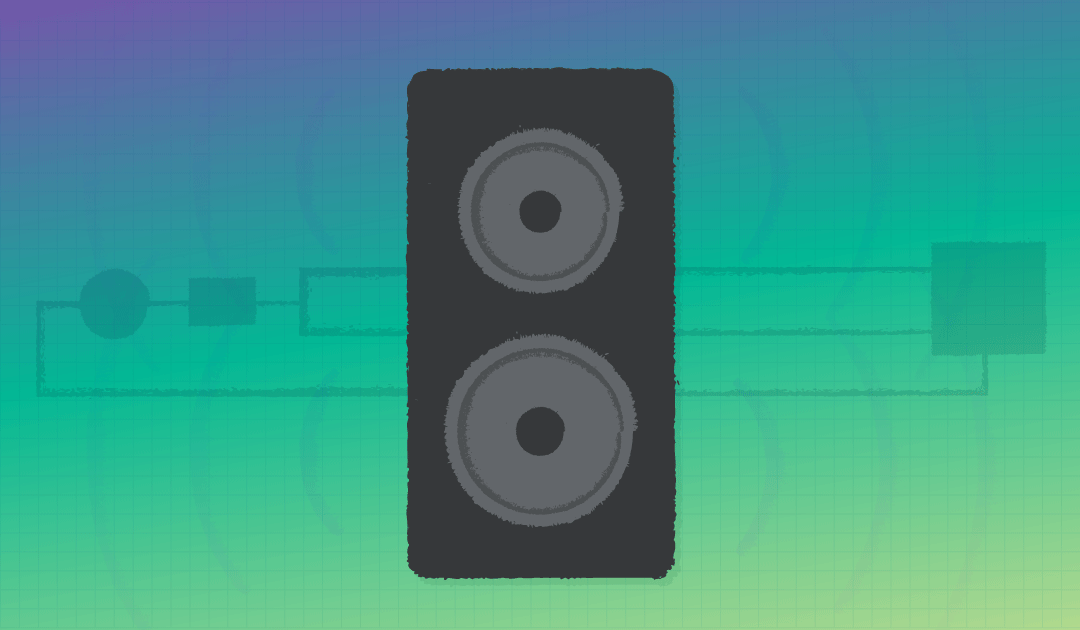
In the world of audio amplification in professional and home environments, we expect spurious background noise to be essentially absent. Mains "hum" and "hiss" from random noise sources, and "buzz" from periodic high frequencies generated by switching circuits are all disallowed but can be tricky to eliminate. Digital audio has not made the issue go away as it starts from an analog source somewhere (maybe a microphone or instrument) so any unwanted signal at the front end gets faithfully reproduced, be it an audience cough or mains hum from a poorly regulated supply rail.
Common Mode Noise Must Be Low in Modern Audio Equipment
Audio engineers are well aware of the various techniques to reduce electrical noise with shielding, balanced lines, careful grounding, and filtering of dc supply rails, but an area that is often problematic is the pick-up of common mode (CM) noise. CM sources add noise to the audio line and return referenced to a local ground which may itself be offset from true ground by indeterminate ac and dc levels. Audio amplifiers can reject the CM signal to a degree - with their so-called Common Mode Rejection Ratio (CMMR). A figure of 60 dB is considered typical performance - the unwanted voltage is reduced by a factor of 1,000 and then appears as an audible differential signal at this level. This may seem good but we have come to expect a dynamic range of around 100 dB, even from home entertainment systems so a 1 V CM spike alongside a 1 V maximum differential signal will produce a crackle 40 dB or 100 times louder than the quietest wanted signal.
While CM noise can be picked up from radiating sources, a major contributor is dc supply rails to audio stages. With the concern about ground loops causing their own problems in audio applications, it is common for supply rails not to be connected to a solid ground near an audio pre-amplifier, allowing supply rail CM noise to be present. For efficiency and size considerations, the dc supply rails are routinely generated by switched-mode power supplies (SMPS) - even if they are followed by local linear regulators, these do nothing to attenuate CM noise that the switcher generates and buzz or hum can be the result.

Origins of Common Mode Noise
So why does an SMPS generate common mode noise? The effect is caused by rapid voltage changes at switching nodes in the circuit, pumping current through stray capacitances into the local input and/or output ground or power return, making the connection jump in voltage due to its self-impedance. A typical route is shown in Figure 2 in an outline ac-dc converter where the drain of the switching transistor Q1 switches between 0 V and several hundred volts at high frequency. Capacitance C1 couples pulses of current into Q1 heatsink, which is often grounded, resulting in current into the converter chassis. Capacitor C2 also allows current spikes into the secondary circuit, finding a return by an indeterminate route through some external stray capacitance or ground connection. This is the current that directly results in CM output voltages. Even line frequency can induce CM currents through C2, due to the action of the line bridge rectifier - if you measured the SMPS primary dc rail, positive or return, with respect to chassis ground, you can see a half-sine line voltage, which forces current through C2, becoming a potential source of CM voltage and hum.
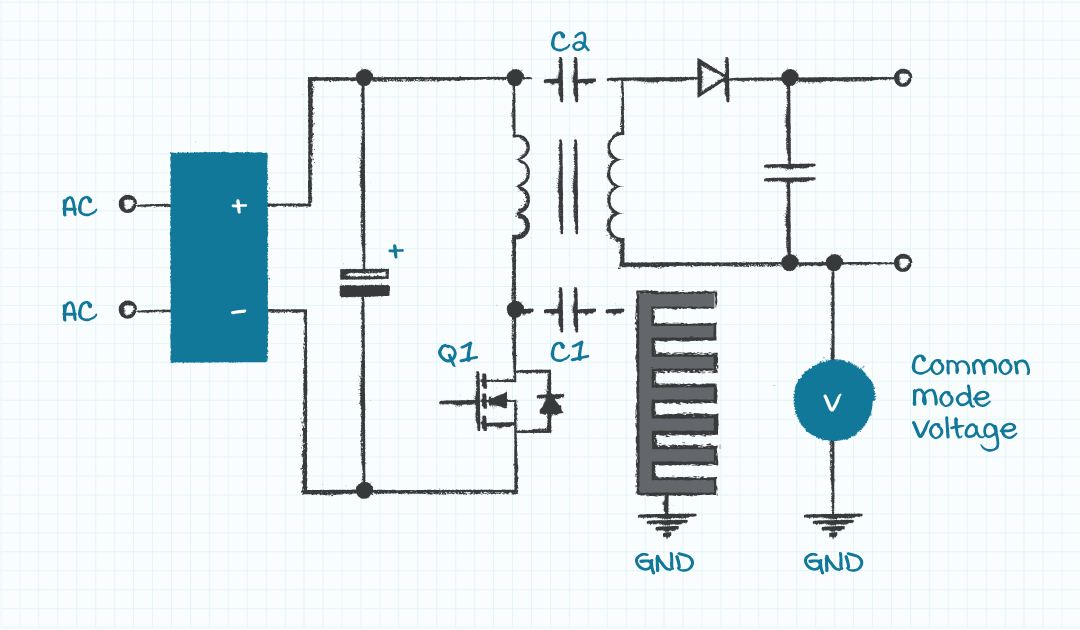
Clearly, avoiding the current into stray capacitances is important and steps can be taken to minimize it, such as adding a grounded screen into the SMPS transformer. This can make safety clearances difficult to achieve however and is often physically impractical, especially with toroidal transformers. Common mode chokes can be inserted in power lines but degrade regulation and can simply push the problem elsewhere, blocking the current but generating a voltage as a result. Minimizing the transformer interwinding capacitance by adding spacing is effective, but typically adds leakage inductance, degrading efficiency, and increasing stress on components.
Local Dc-Dc Converters Can Be a Solution
The heart of the problem is the scale of the leakage capacitance, which can be in the range of hundreds of pF for larger system power supplies, so an elegant solution is to use a separate isolated dc-dc converter with extra-low coupling capacitance powered from a system voltage. This just provides the relatively small power requirements of the sensitive analog audio stage. In the CUI range, a part in the VQA series with a +/- 9 V output would be a candidate with the rated 1 W of output - usually plenty for the purpose. Coupling capacitance is just 6.6 pF typical, keeping common mode current to a very low level. The original intended application for the VQA series is to power IGBT gate drivers, where the low capacitance gives immunity to the high dV/dt levels in high-side drives. Alternatively, many of the smaller regulated and unregulated isolated dc-dc converters in the CUI portfolio (PDP1-M Series for example) could potentially be used, with their coupling capacitance significantly lower than would be seen in larger ac-dc supplies.
Fundamentals , Product Selection
You May Also Like
Have comments regarding this post or topics that you would like to see us cover in the future?
Send us an email at powerblog@cui.com
